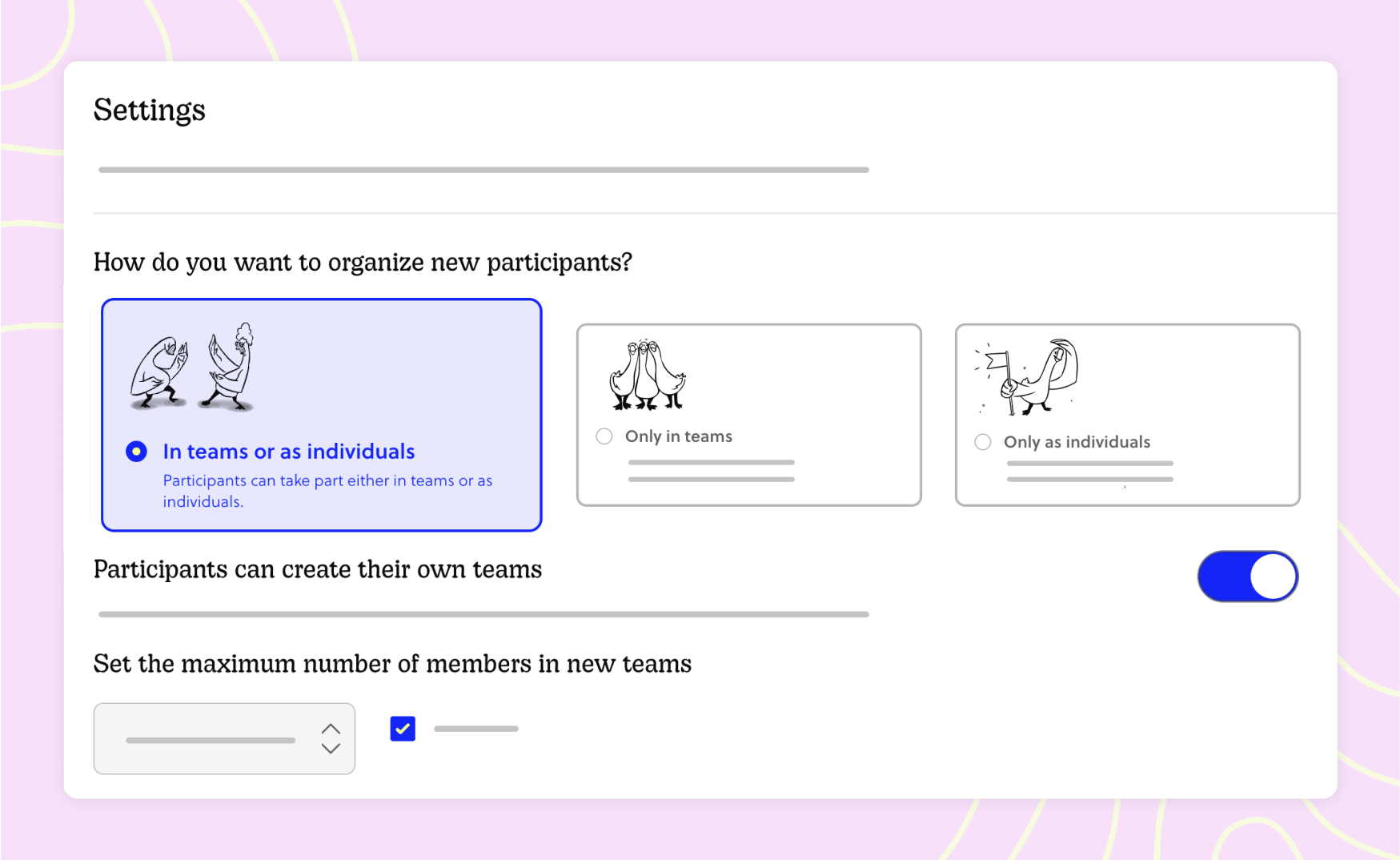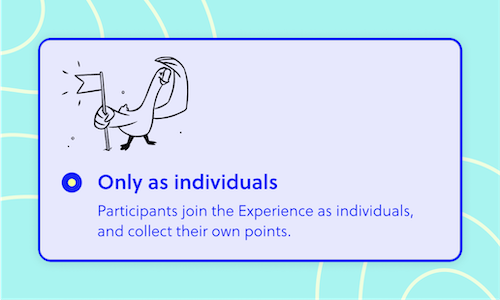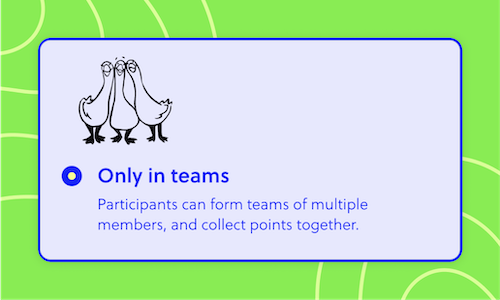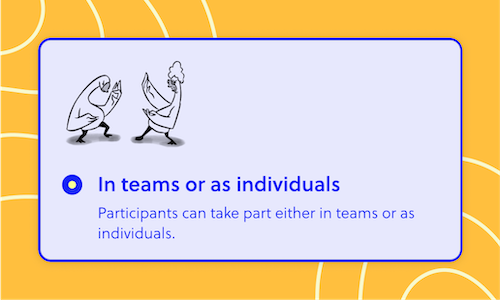Individuals, Teams, or Both? How Participants Can Join Your Goosechase Experience
Organizers now have more flexibility than ever when setting up a Goosechase Experience. In addition to letting participants join as individuals or in teams, you can now offer a hybrid option where participants can choose what works best for them.
Whether you're planning an annual training, a casual campus challenge, or a community event with a mix of ages and group types, there's now a mode that perfectly fits your people and your goals.
Let's take a gander at the three options in the Participants Tab of the Goosechase Studio, and when to use each one!

A Quick Look at the Ways People Can Join Your Goosechase
✅ As Individuals
Each player joins and competes on their own. They’ll complete Missions solo, with their own devices, submissions and leaderboard ranking.
Example: New employees at a remote company complete an onboarding experience that prompts them to submit documents, introduce themselves to leadership, and get to know their peers.
👯 In Teams
Players work together under a shared team name. While they can complete Missions via individual profiles and devices, they contribute towards one score.
Example: A business' multiple locations compete against each other during fundraising season to see who can raise the most money.
🔀 In Teams OR as Individuals (Participants get to choose when they join)
Folks can choose to participate as individuals or in teams. This comes particularly in handy when you're activating a big crowd that prefers different levels of engagement.
Example: A massive forest preserve invites tourists and the local community to explore hidden gems across 23,000 acres.
When to Choose Each Mode
Need help picking the best format for your Experience? Here’s how to decide based on your event, audience, and goals.
🧍♀️ Choose Individuals When...

- You’re tracking individual progress (e.g. training, onboarding)
- You need clear accountability for participation
- You’re running something remote or asynchronous
- You want to choose one winner
Perfect for:
- A virtual team challenge
- Online courses or onboarding
- Professional development experiences
- Individual goal tracking or rewards
👯♂️ Choose Teams When...

- You want to build camaraderie or teamwork
- You want to spark friendly (or fiery) competition with others in the Goosechase Experience
- You’re working with younger participants or families
- You want to allow the use of multiple devices
Perfect for:
- A school field trip
- Campus orientation weeks
- Corporate team-building retreats
- Family fun days
- Camp activities or after-school programs
🔁 Choose Both (Hybrid) When...

- You want maximum flexibility
- You’re running a public or drop-in event
- You’re not sure if players will arrive solo or in groups
- You don’t want team setup to be a barrier to participation
Perfect for:
- Self-guided tours
- Open house events
- Community festivals or city-wide challenges
- Museum or library scavenger hunts
FAQs and Best Practices for Organizing Participants
Now that you’ve got options, here are a few questions we often hear—plus some tips to make the most of each mode.
Can participants switch from a team to individual (or vice-versa) after joining?
Not after they've joined—so it's best to let them know ahead of time what their options are. In hybrid mode, they can decide before starting: fly solo or join a team.
Will teams and individuals compete fairly in hybrid mode?
Yes! You can design your Missions to level the playing field. A few ideas:
- Mix creative and physical Missions to balance strengths
- Use bonus points or subjective scoring for standout submissions
- Highlight top teams and individuals on your leaderboard or in a wrap-up
What's the ideal team size?
We recommend 2–5 participants per team. It’s small enough to keep everyone engaged, but big enough to fuel collaboration (and a little friendly chaos).
Can I pre-create teams or assign people manually?
Absolutely. You can set up teams ahead of time and even assign participants if you want more control—great for classrooms, departments, or structured programs.
At the end of the day, the best way to organize participants is the one that works for your Experience.
Want structured accountability? Go individual.
Need to build bonds? Choose teams.
Hosting a mixed or open event? Hybrid is your best friend.
With our newest update, you don’t have to choose between structure or flexibility—you can have both.





